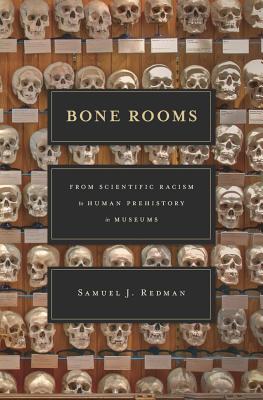Bone Rooms: From Scientific Racism to Human Prehistory in Museums
 In 1864 a U.S. army doctor dug up the remains of a Dakota man who had been killed in Minnesota. Carefully recording his observations, he sent the skeleton to a museum in Washington, DC, that was collecting human remains for research. In the “bone rooms” of this museum and others like it, a scientific revolution was unfolding that would change our understanding of the human body, race, and prehistory. Samuel Redman unearths the story of how human remains became highly sought-after artifacts for both scientific research and public display. Seeking evidence to support new theories of human evolution and racial classification, collectors embarked on a global competition to recover the best specimens of skeletons, mummies, and fossils. The Smithsonian Institution built the largest collection of human remains in the United States, edging out stiff competition from natural history and medical museums springing up in cities and on university campuses across America. Today, debates about the ethics of these collections continue, but the terms of engagement were largely set by the surge of collecting that was already waning by World War II.
In 1864 a U.S. army doctor dug up the remains of a Dakota man who had been killed in Minnesota. Carefully recording his observations, he sent the skeleton to a museum in Washington, DC, that was collecting human remains for research. In the “bone rooms” of this museum and others like it, a scientific revolution was unfolding that would change our understanding of the human body, race, and prehistory. Samuel Redman unearths the story of how human remains became highly sought-after artifacts for both scientific research and public display. Seeking evidence to support new theories of human evolution and racial classification, collectors embarked on a global competition to recover the best specimens of skeletons, mummies, and fossils. The Smithsonian Institution built the largest collection of human remains in the United States, edging out stiff competition from natural history and medical museums springing up in cities and on university campuses across America. Today, debates about the ethics of these collections continue, but the terms of engagement were largely set by the surge of collecting that was already waning by World War II.


